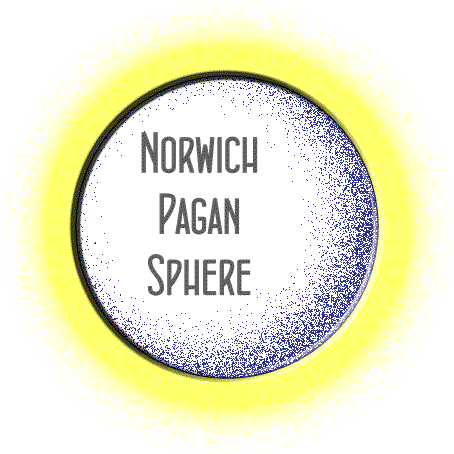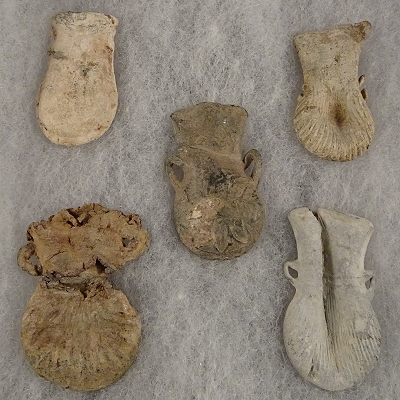
Brought to you by
Norwich Pagan Sphere

 |
Brought to you by
|

It seems to be part of human nature to want to retain some physical object as a connection with a special place or event. Pilgrims have always left for home with souvenirs. Sadly, in the past as today, some are selfish enough to chip away pieces of stones, shrines or statues. It was this sort of vandalism at Christian shrines that led to the appearance of the Medieval trade in pilgrimsí signs or tokens in the 12th century.
Such signs, stitched to hats or cloaks, had practical value in offering genuine safe passage for pilgrims on their homeward journeys, even in times of war. They also gave prestige and proof that a person had actually done what they had set out to do. But, more than this, they were regarded as holy in themselves through having been in direct contact with the relics or tomb of a saint.
Signs were used as amulets for protection on the way home and to bring healing and other blessings to pilgrims themselves and to their friends and families. They were often buried in fields or placed in wells to bring abundance or weed-free crops, and placed in the home as apotropaic devices. Healing remedies could be made by dipping signs in water or wine to be drunk.
It was the shrine to St. Thomas Becket in Canterbury that made souvenir holy water containers popular. People have always gathered water from sacred springs and rivers, but this holy water, it was believed, contained an infinitesimal portion of the blood of the murdered bishop, thoughtfully gathered by the monks who discovered him. The water was believed to effect cures, and the practice soon spread to other shrines, although remaining a particularly English phenomenon.
These containers, called ampullae, were usually small, flat, bag-shaped, lead vials. Filled with holy water at the shrine and touched to the saintís tomb or relic, they were worn hung around the neck.
croppedweb400401.jpg)
As well as being protective amulets, ampullae were a way of bringing direct healing to those sick at home or libations to the fields. Many of those found today are broken, opened in antiquity for their contents, as with that illustrated above (2005.26). They are most commonly found by metal detectorists in plough soil, as were all of those illustrated here, but the evidence does suggest a greater association between ampullae and fields than might be suggested by the fact that detectorists mainly operate on farmland (Anderson, 2010).
Many ampullae used the pre-eminent pilgrimage symbol of the scallop shell, as with the Norfolk example below (2005.25). Although most closely linked to the shrine of St. James at Santiago de Compostela, the scallop was a symbol of renewal and regeneration before Christianity. Beginning with representations of Venus, it became commonplace in Roman architecture and on sarcophagi (Pullan, 2013).
croppedweb400400.jpg)
One of the five pictured (2005.29, found near Burnham Norton on the Norfolk coast) is clearly from the major Marian shrine at Walsingham in North Norfolk. The reverse side (below) shows the 'Broad Arrow' of Walsingham, surmounted by what appears to be a worn double V, for Virgo Virginum, Virgin of Virgins, indicating Mary, Mother of God, and forming the W of Walsingham. (The VV symbol has also been used widely as an apotropaic device in house protection.)

croppedweb400400.jpg)